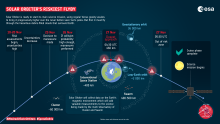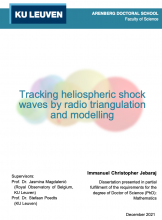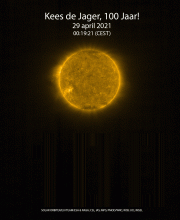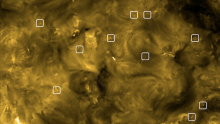SIDC News
On July 19, 2021, we added a new time series to our data products: extended hemispheric sunspot numbers starting in 1874. Those reconstructed numbers are based on the sunspot areas listed in the Greenwich photographic catalogue, and are calibrated on the SILSO reference hemispheric series, which starts only in 1992. This newly published series results from a collaboration between SILSO, the University of Graz (Austria) and the Skolkovo Institute of Science and Technology (Moscow, Russia).
In honour of the 100th Birthday of Kees de Jager, prominent Dutch astronomer and one of our favorite solar physicists, the EUI instrument onboard Solar Orbiter took a pair of images in two different wavelengths. The images were taken in the very early morning of April 29, at 00:19:21 and 00:20:21 CEST representing the years 1921 and 2021.
In January 2020, the 13-month smoothed sunspot number rose for the first time since the maximum of cycle 24 (April 2014). Most probably, this indicates that the minimum between cycles 24 and 25 was passed in December 2019.
Les premières images prises par le télescope EUI à bord de la mission spatiale Solar Orbiter viennent d’être publiées. L’instrument EUI, coordonné par la Belgique, a découvert des « feux de camp » sur le Soleil.
De eerste beelden gemaakt door de telescoop EUI aan boord van de ruimtemissie Solar Orbiter zijn vrijgegeven. Het EUI instrument onder Belgische leiding, ontdekte 'kampvuren' op de Zon.






